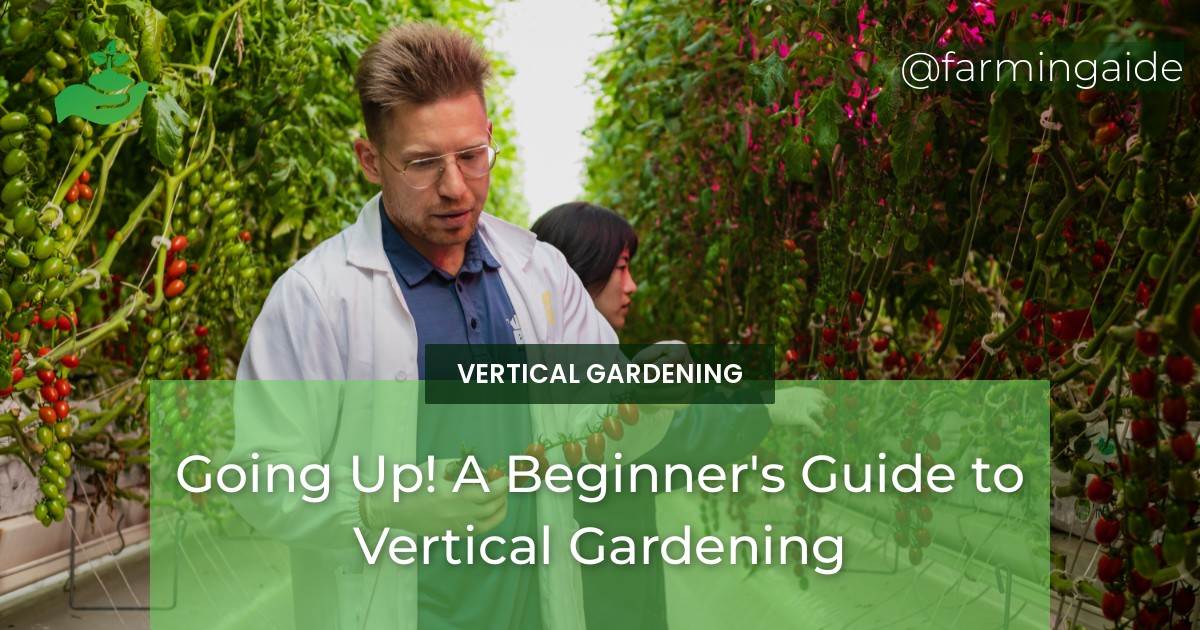Vertical gardening is an innovative way to get the most out of your gardening space. Not only does it help maximize your space, but it also adds a unique aesthetic appeal to your garden. However, if you are new to vertical gardening, it can be intimidating to know where to start.
This Beginner’s Guide to Vertical Gardening will provide you with all the necessary information to get started with vertical gardening, from choosing the right structure to plant selection and care.
Table of Contents
Advantages and disadvantages of vertical gardening
Before delving into the specifics of vertical gardening, it is vital to understand the pros and cons of this method.
Pros
- Maximizes space
- Improves air circulation
- Increases accessibility for those with mobility issues
- Improves aesthetic appeal
- Reduces the need for weeding
Cons
- May require additional watering
- Can be challenging to maintain
- May need additional support structures
- May be limited in plant selection
Choosing the right structure for vertical gardens
Choosing the right vertical garden structure will depend on various factors such as the space available, the type of plants you want to grow, and your personal preference. Here are some popular types of vertical garden structures to consider:
Types of vertical garden structures
- Wall-mounted planters
- Hanging baskets
- Trellises
- Living walls
- Pallet gardens
Factors to consider when choosing a structure
- The amount of sunlight the structure will receive
- The type of plants you want to grow
- The size of the structure
- The amount of support the structure will need
- The location of the structure
ALSO READ
Plant selection and care
Choosing the right plants for your vertical garden is crucial for its success. Here are some tips for selecting and taking care of plants in your vertical garden:
Best plants for vertical gardens
- Herbs (e.g., basil, parsley, oregano)
- Leafy greens (e.g., lettuce, spinach, kale)
- Flowers (e.g., petunias, pansies, snapdragons)
- Succulents (e.g., sedums, echeverias)
- Vegetables (e.g., tomatoes, peppers, beans)
Tips for planting in a vertical garden
- Use lightweight soil
- Ensure proper drainage
- Plant seeds or starter plants as close together as possible
- Plant taller plants near the back of the structure
- Use a moisture-retaining potting mix
Care for plants in a vertical garden
- Water regularly and deeply
- Fertilize as needed
- Prune regularly to maintain the shape and size of the plants
- Check for pests and diseases regularly
- Replace plants as needed
Watering and irrigation tips
Proper watering is essential for the success of your vertical garden. Here are some watering and irrigation tips:
Importance of proper watering
- Prevents under or over-watering
- Helps plants receive the necessary nutrients
- Prevents root rot
- Helps plants grow faster
- Prevents water wastage
Methods for watering a vertical garden
- Drip irrigation
- Soaker hoses
- Hand watering
- Sprinklers
- Self-watering systems
Irrigation systems for vertical gardens
- Automatic irrigation systems
- Manual irrigation systems
- Gravity-fed systems
- Recirculating systems
ALSO READ
Tips for maintaining vertical gardens
Maintaining your vertical garden is essential for its long-term success. Here are some tips for maintaining your vertical garden:
Pests and diseases in vertical gardens
- Use organic pest control methods
- Monitor plants regularly for pests and diseases
- Remove affected plants immediately
- Use companion planting to deter pests
Pruning and training plants in a vertical garden
- Use pruning shears to trim plants
- Train plants to grow in a specific direction
- Use supports to help weaker plants grow
- Remove dead or damaged branches regularly
Seasonal maintenance for vertical gardens
- Clean up debris and dead plants
- Inspect the structure for damage
- Replace plants as needed
- Adjust watering and fertilization according to the season
Vertical gardening is an excellent way to maximize your gardening space while also adding a unique aesthetic appeal to your garden. By following the tips outlined in this guide, you can successfully create and maintain a beautiful vertical garden.
RELATED ARTICLES:


